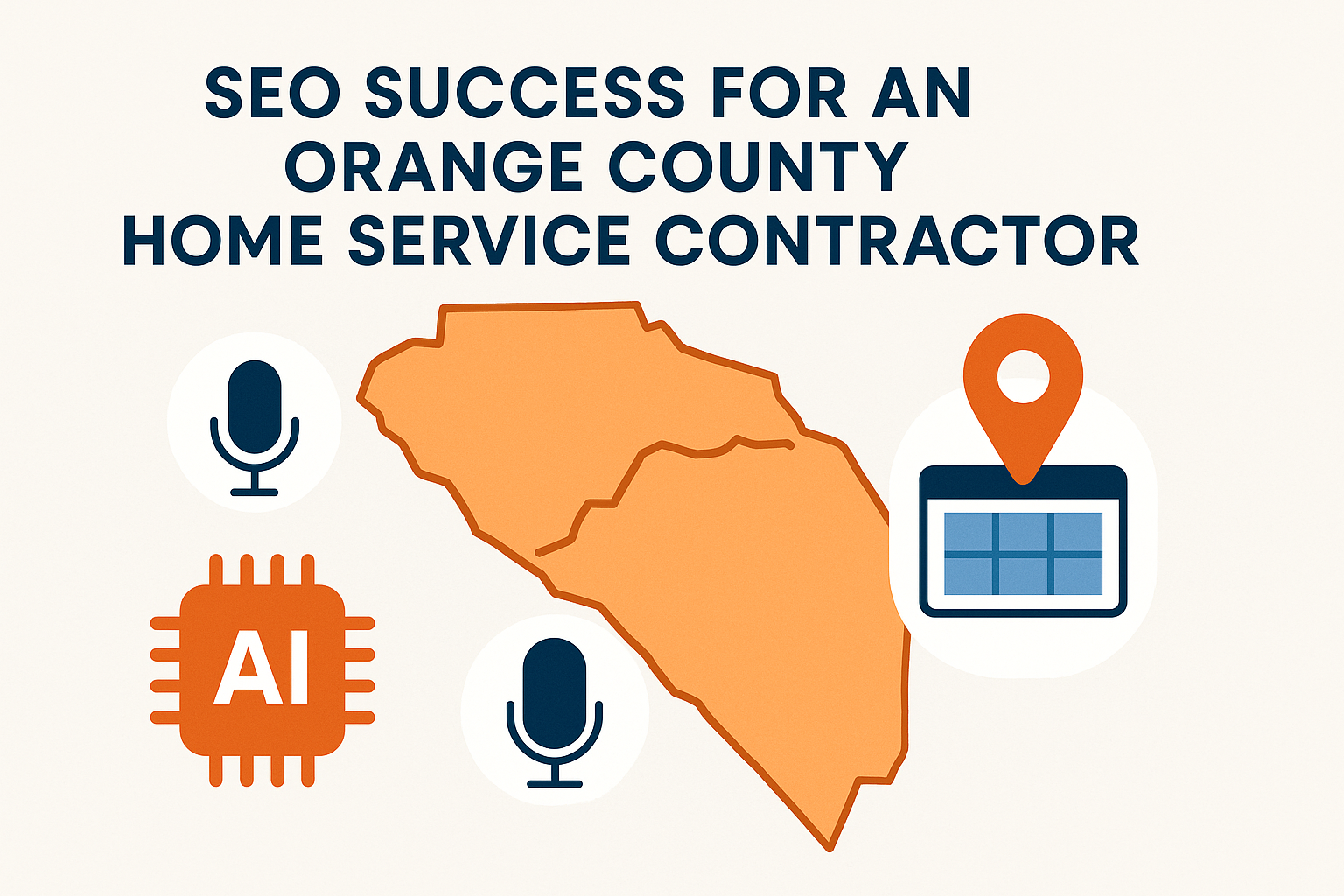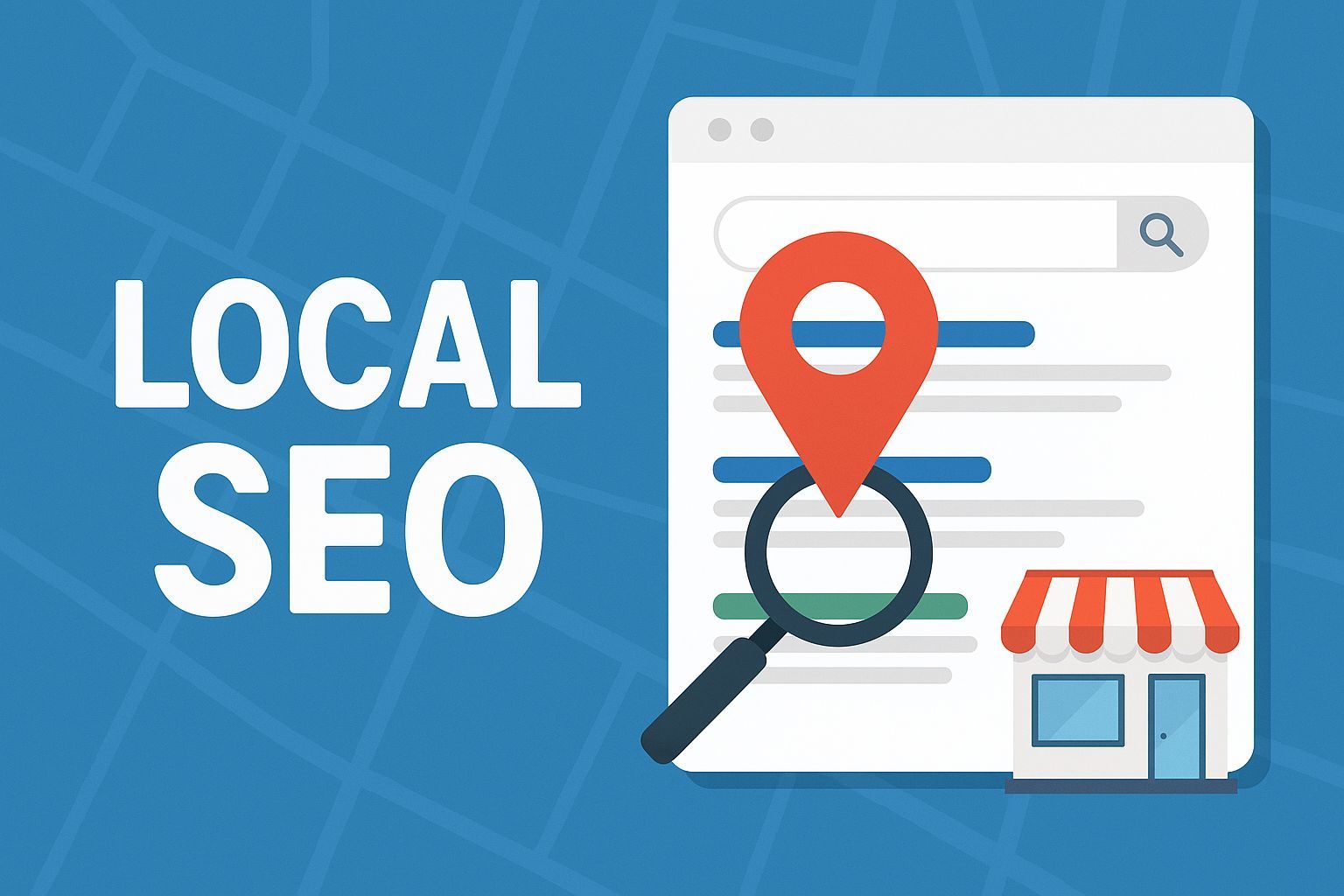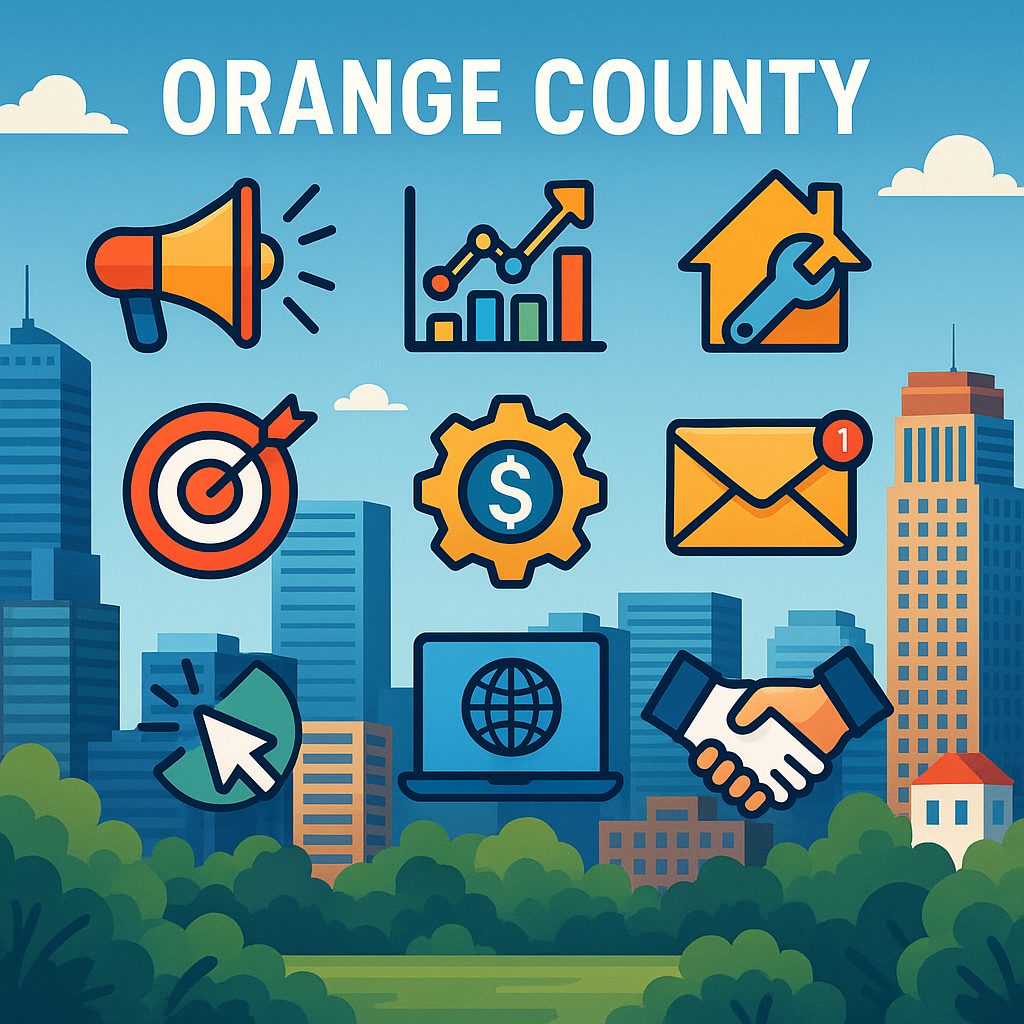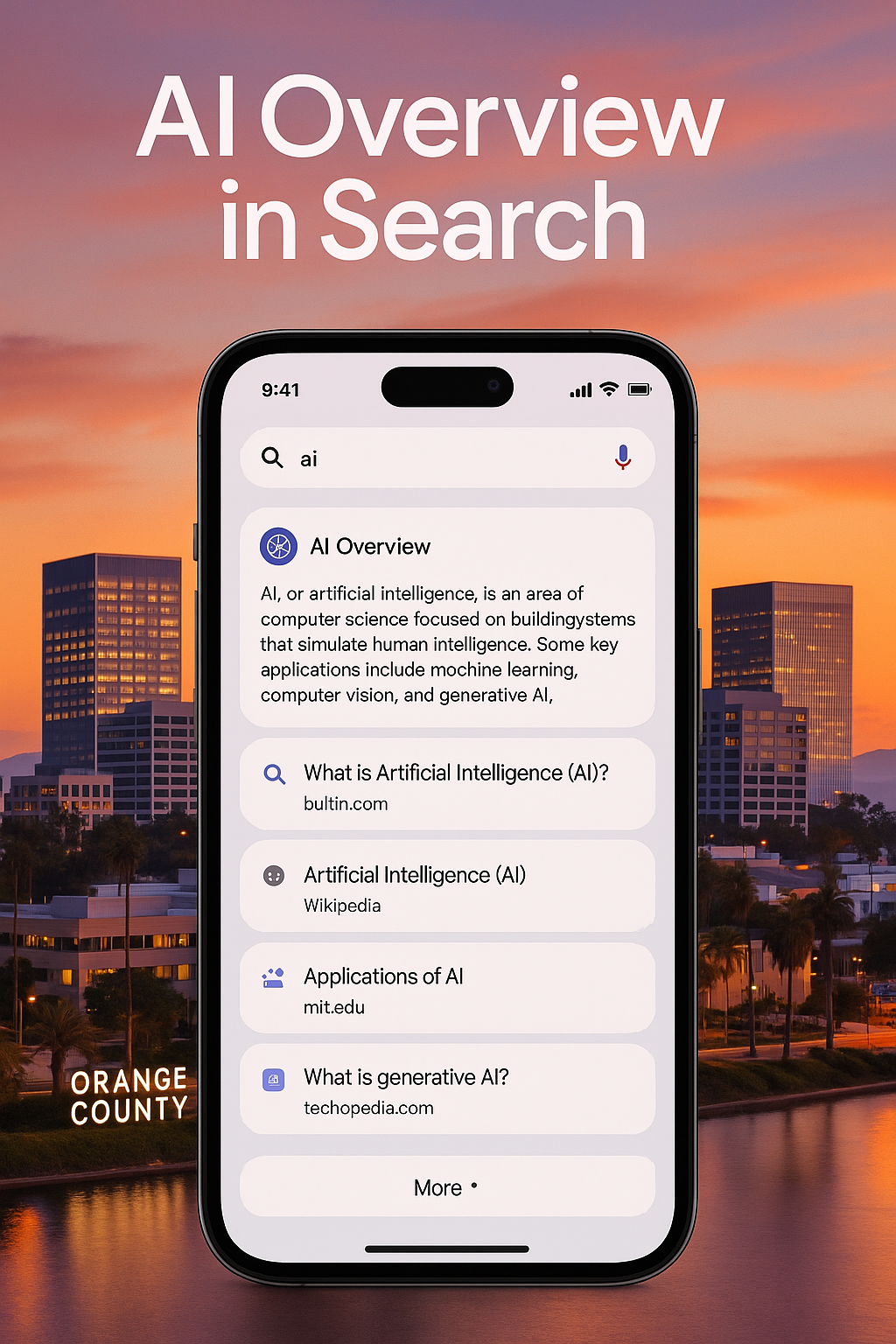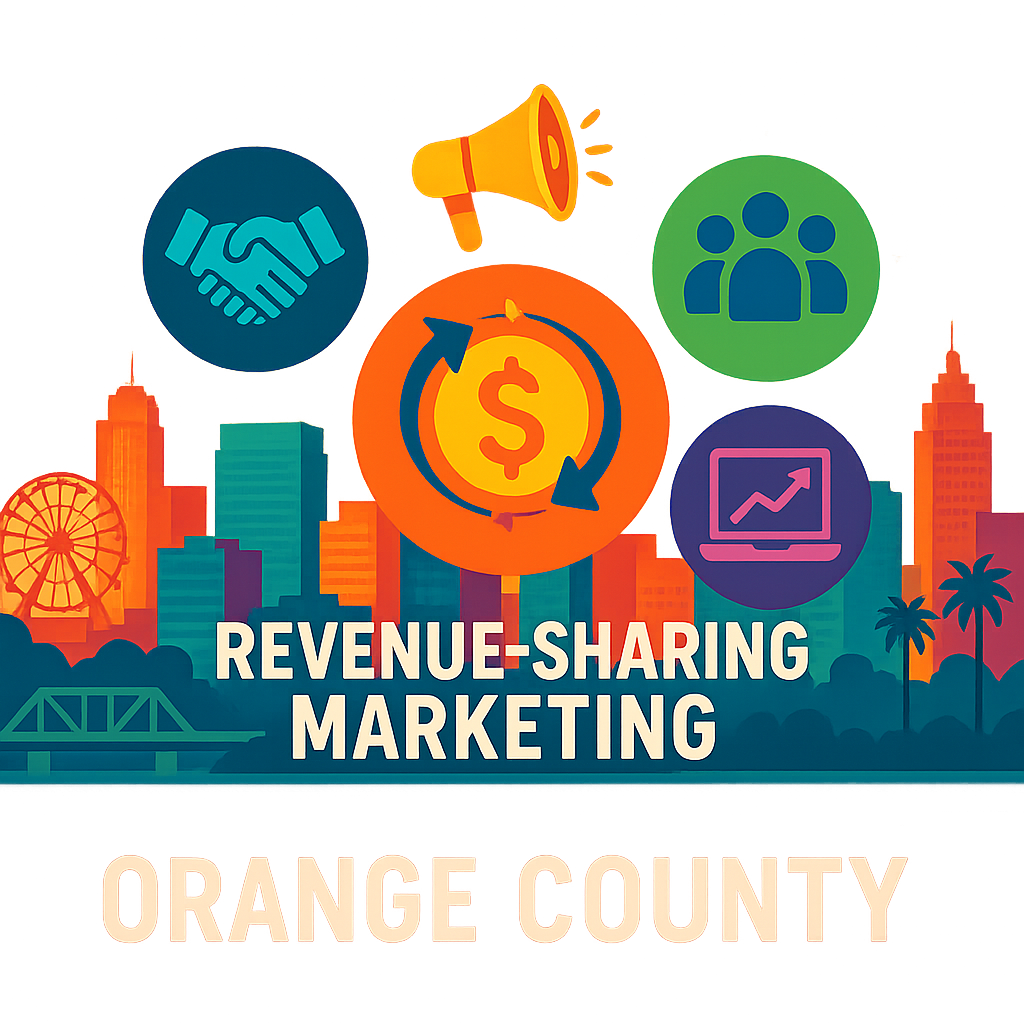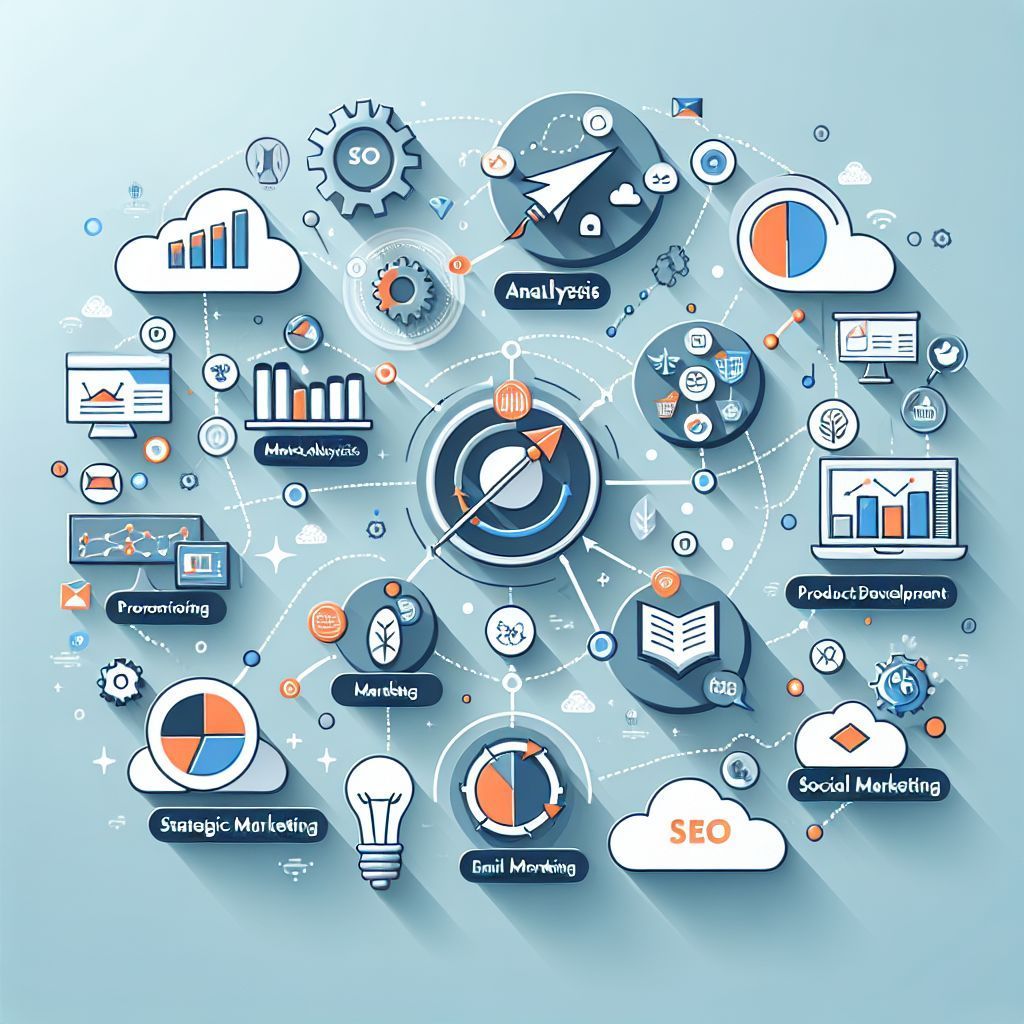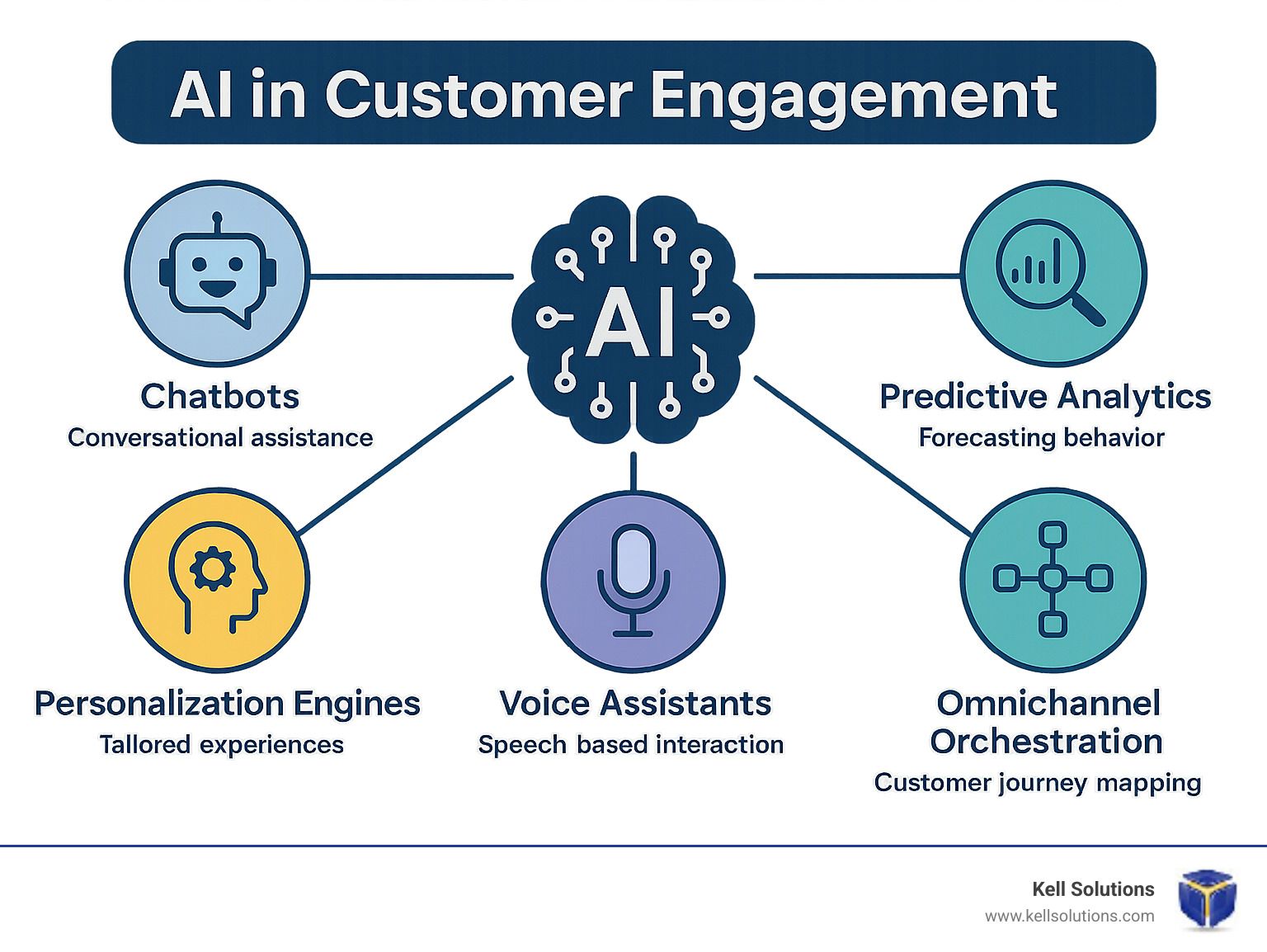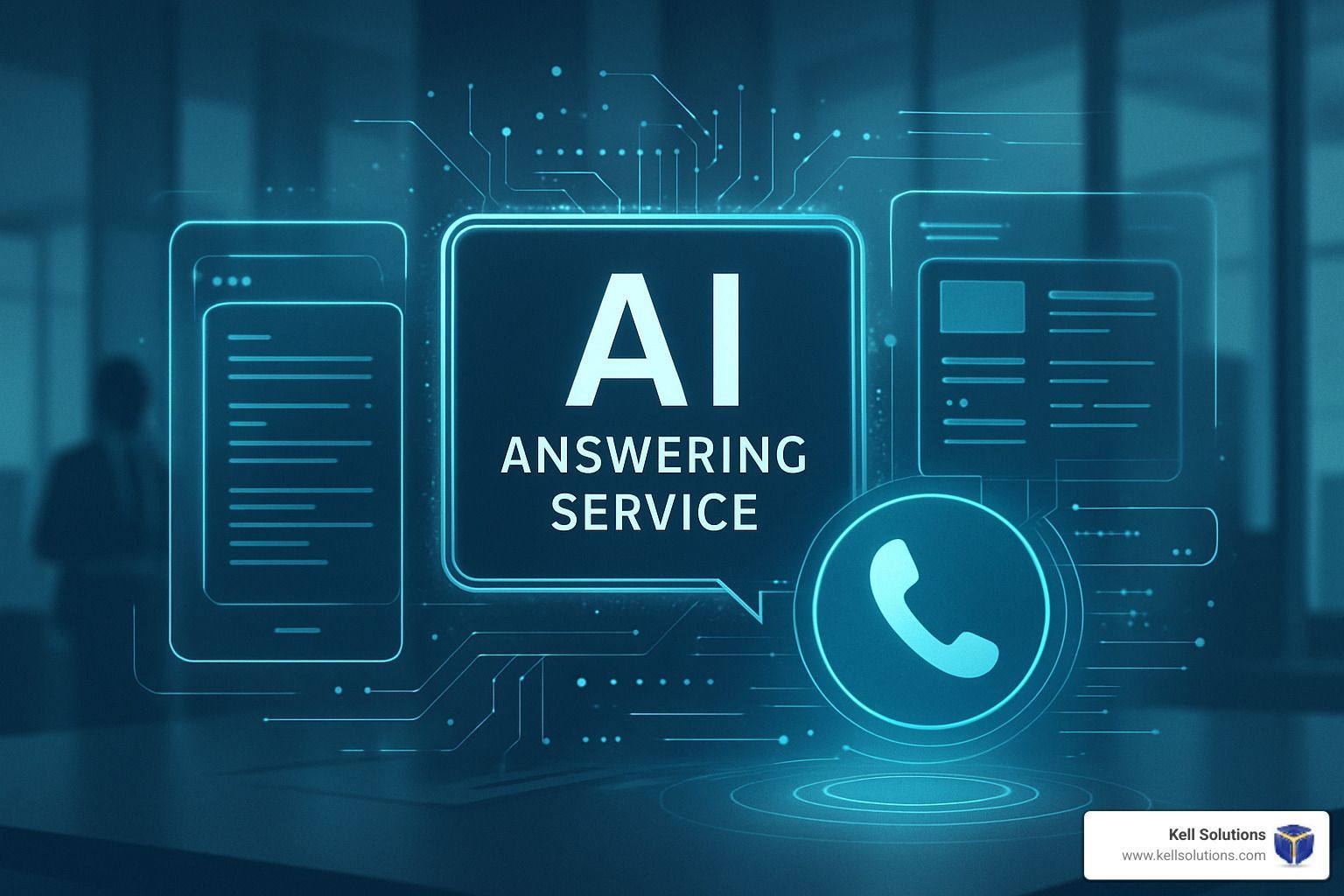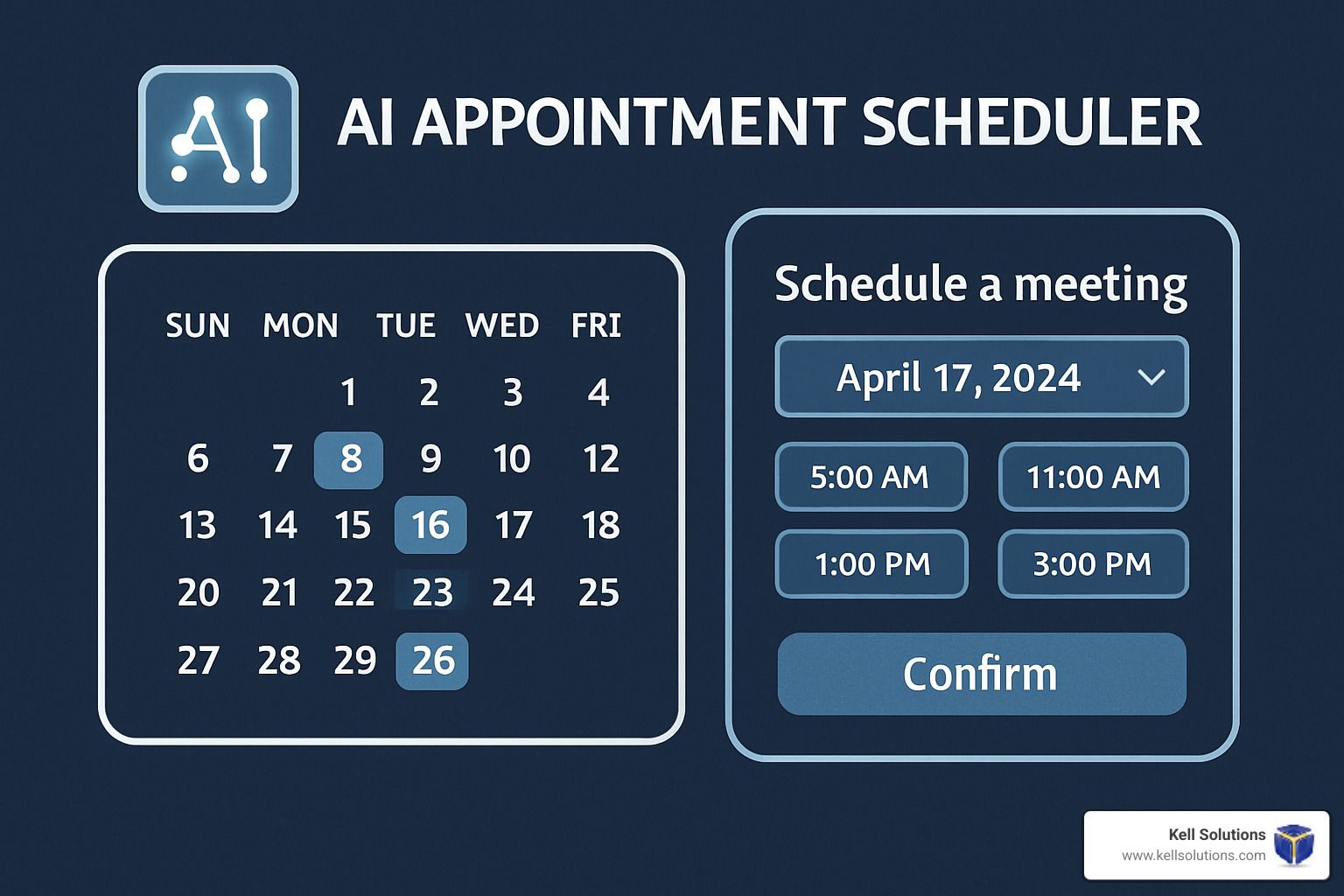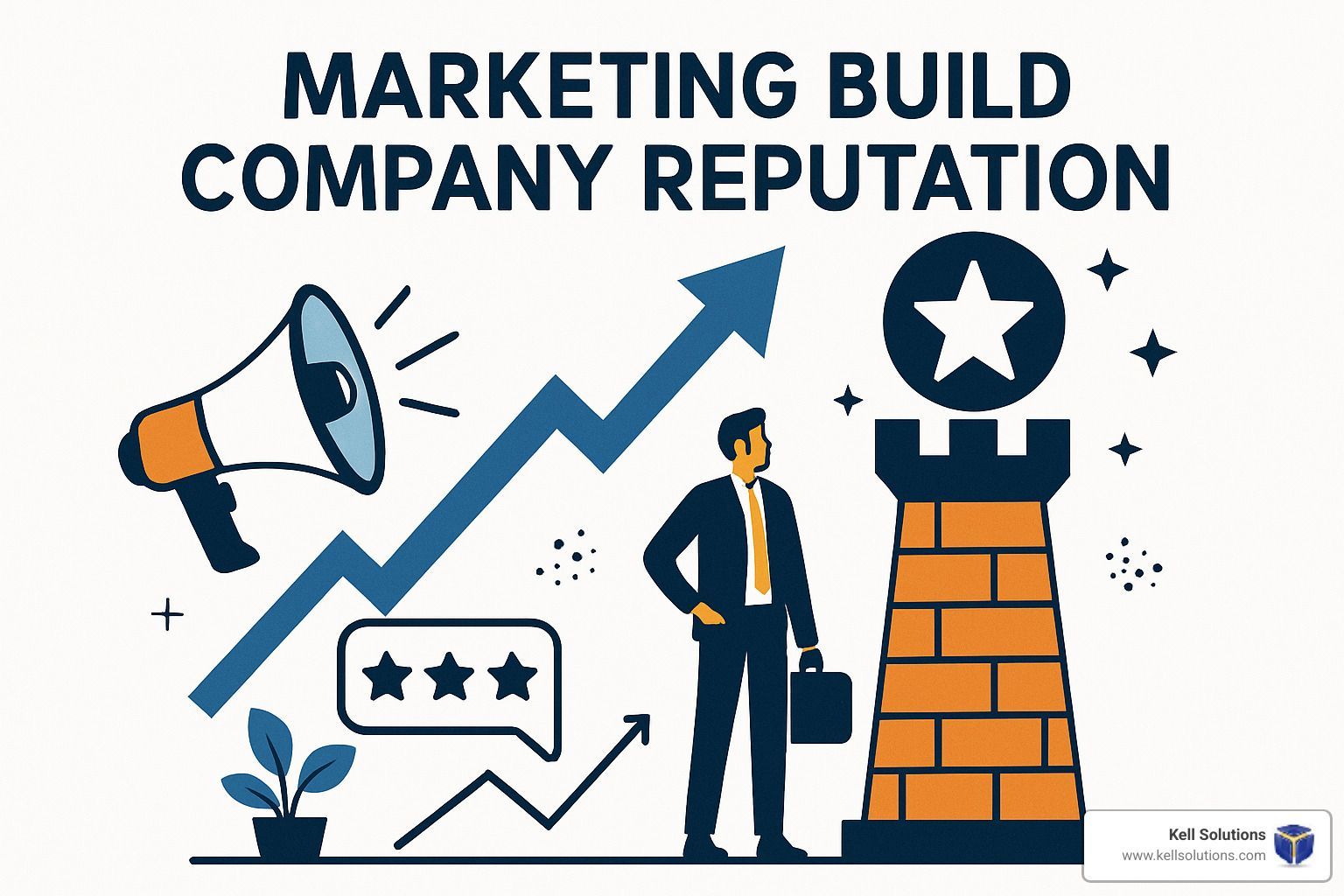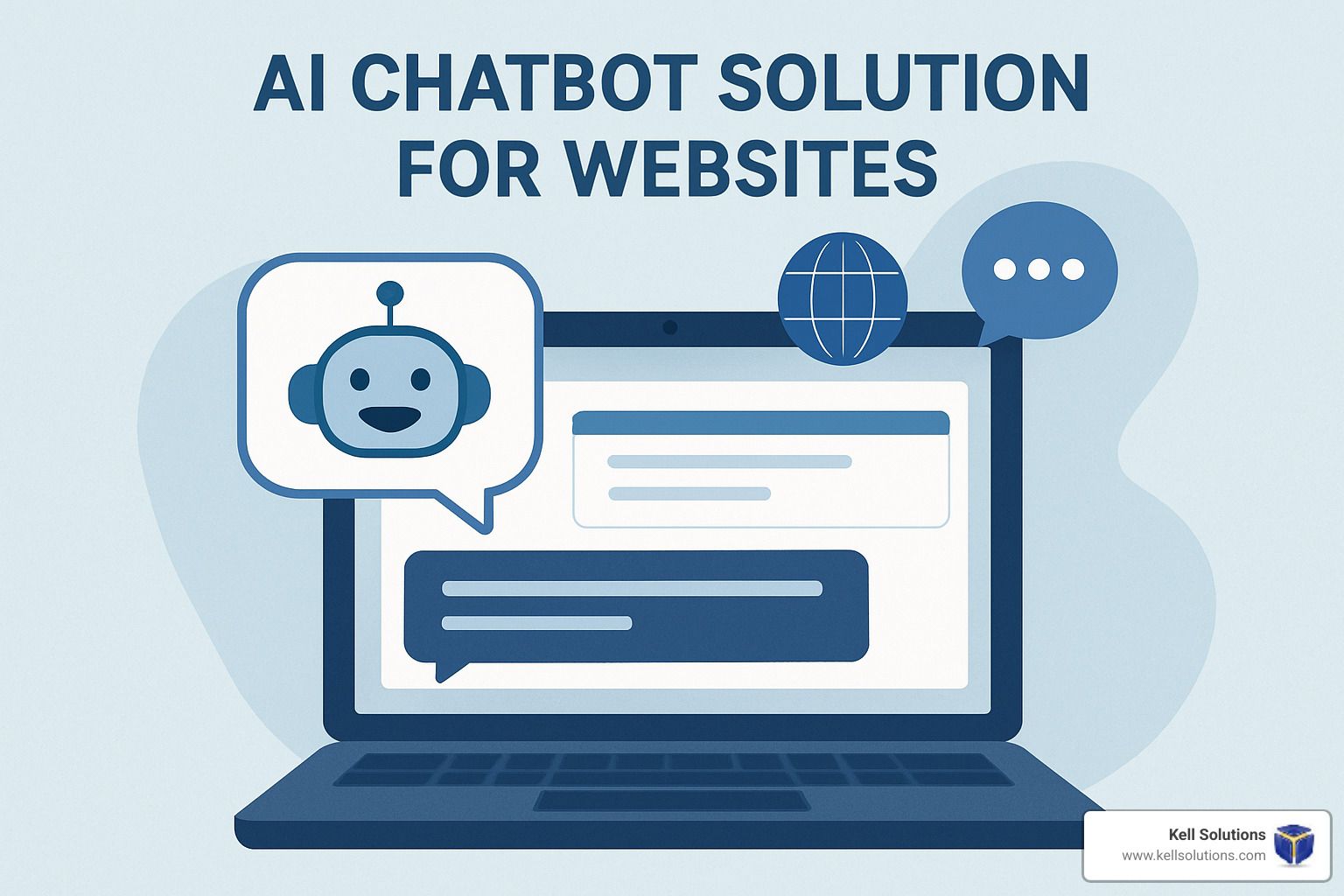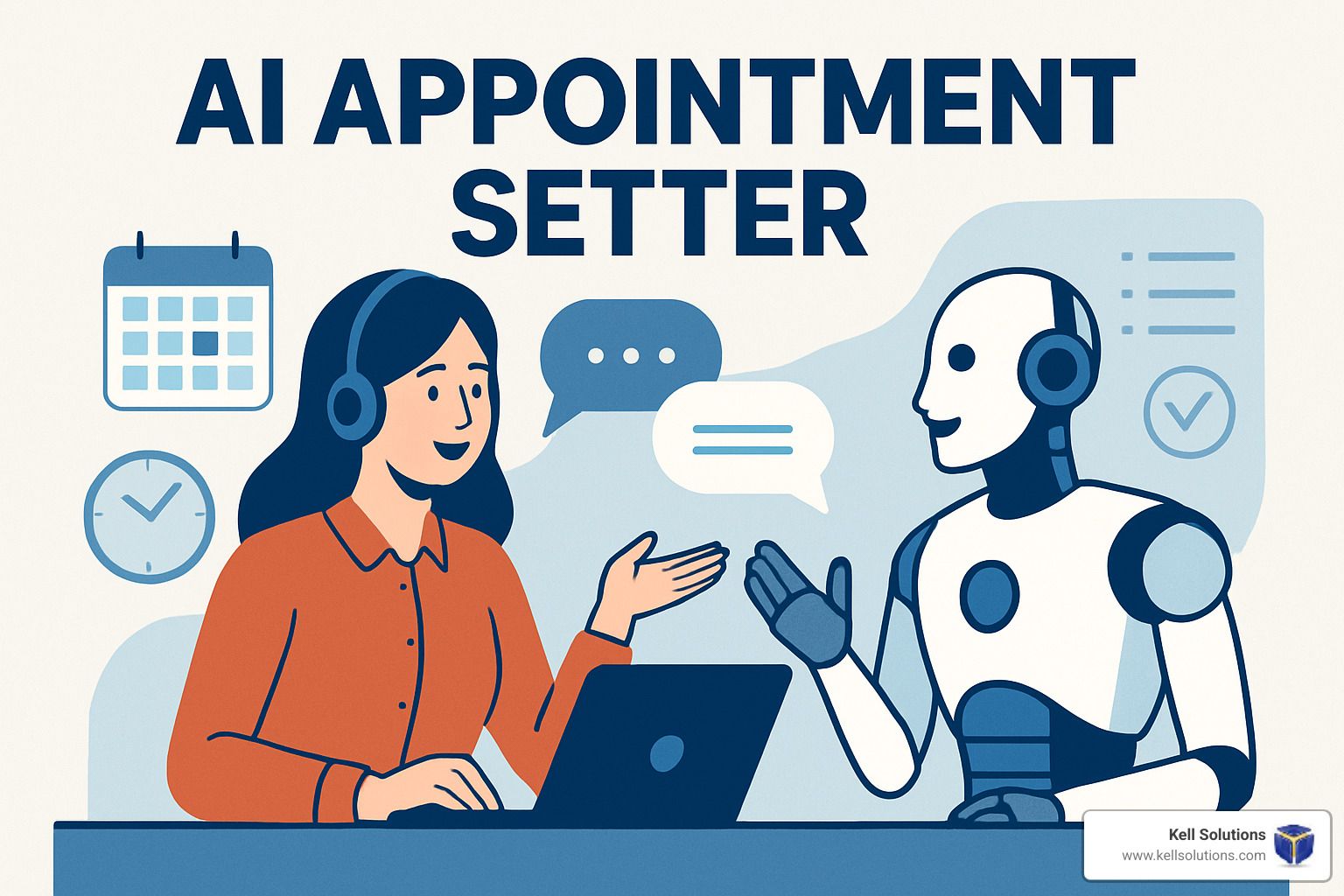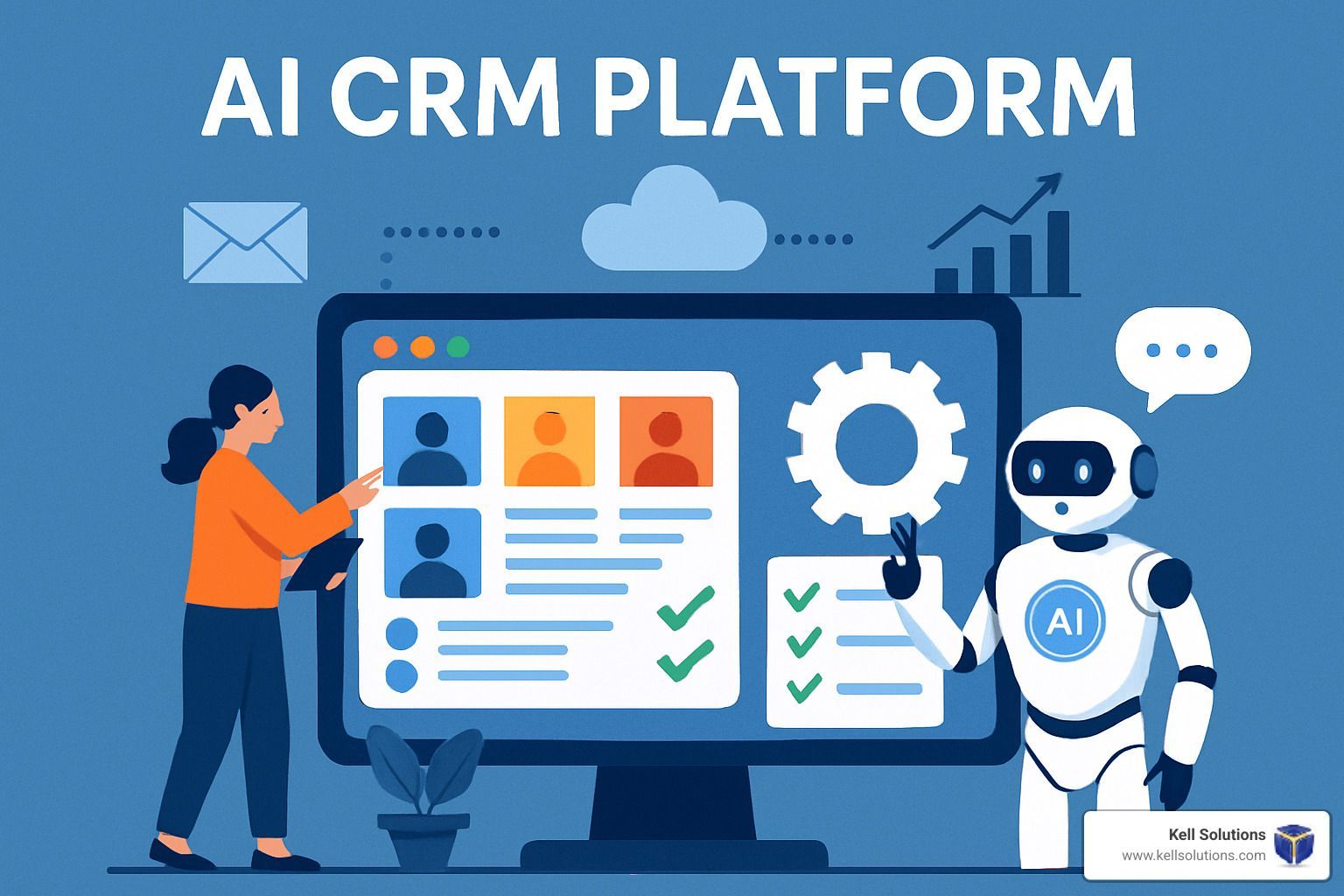AI Customer Segmentation Strategies for SMB Growth & Targeting
Leveraging AI to Identify, Predict, and Engage High-Value Customer Segments for SMBs

Key Takeaways
- AI-powered customer segmentation enables SMBs to achieve 63% higher conversion rates and 41% reductions in customer acquisition costs compared to traditional methods.
- Modern AI segmentation analyzes over 140 behavioral and contextual signals, creating dynamic customer profiles that far outperform basic demographic grouping.
- Small businesses implementing AI segmentation strategies can expect a 47% increase in email open rates and 22% improvement in customer retention.
- Emotion-aware AI segmentation helps businesses connect with customers on a deeper level, resulting in 39% higher satisfaction scores.
- By 2027, 78% of SMBs using AI segmentation will achieve marketing ROI parity with enterprise-level competitors.
The gap between small businesses and enterprise giants is closing faster than ever, and AI customer segmentation is the bridge making it happen. What once required massive data teams and six-figure budgets is now accessible to businesses of all sizes through streamlined AI tools designed specifically for SMB needs.
Small and medium-sized businesses are now leveraging AI-driven customer segmentation to compete with enterprise-level marketing strategies. By analyzing vast datasets and predicting consumer behavior, AI tools empower SMBs to deliver tailored experiences that drive customer loyalty and revenue growth. HubSpot's AI-powered platform is helping thousands of small businesses implement these enterprise-grade segmentation strategies without the enterprise-level complexity or cost.
AI-Powered Customer Segmentation: The SMB Growth Secret Hiding in Plain Sight
Customer segmentation has evolved dramatically from basic demographic sorting to sophisticated AI-driven analysis that reveals the hidden patterns in your customer data. Today's AI systems don't just look at who your customers are – they analyze what they do, how they feel, and what they're likely to want next. For SMBs, this technological leap means accessing insights that were previously available only to companies with dedicated data science teams.
The numbers tell the story: businesses implementing AI segmentation are seeing 63% higher conversion rates and 41% reductions in customer acquisition costs. What's most remarkable is that these aren't enterprise-exclusive results – they're increasingly common among businesses with just a few hundred customers in their database.
"We implemented AI segmentation with just 840 customers in our database and saw a 32% increase in repeat purchases within 90 days. The system identified patterns we never would have spotted manually." – Sarah Chen, Founder of Brightleaf Home Goods
The 4 AI Segmentation Models That Transform SMB Marketing Results
Modern AI segmentation has moved far beyond the simplistic demographic groupings of the past. Today's most effective SMBs are leveraging four powerful models that deliver actionable insights and measurable results.
1. Behavioral Clustering: Track Actions, Not Just Demographics
Traditional segmentation might tell you a customer is a 35-year-old suburban homeowner, but behavioral clustering reveals that they browse your site every Tuesday evening, typically comparing high-end options before purchasing mid-range products during sales.
This action-based intelligence allows SMBs to understand the "why" behind purchases, not just the "who."
Behavioral clustering algorithms like k-means identify natural groupings based on similar actions: browsing patterns, purchase frequency, average order value, and engagement timing. One craft brewery used this approach to discover a segment of customers who always purchased within 48 hours of new product announcements – allowing them to create a "first taste" program that increased retention by 28%.
Implementation typically begins with identifying 5-7 key behavioral metrics most relevant to your business model. For e-commerce, this might include time between purchases and category browsing patterns, while service businesses might track service upgrade acceptance rates and support ticket frequency.
2. Predictive Value Segmentation: Identify Tomorrow's VIPs Today
Perhaps the most powerful AI segmentation approach for resource-constrained SMBs is predictive value modeling. This technique uses neural networks and regression analysis to identify early indicators of high lifetime value customers – sometimes after just a single purchase or interaction.
By analyzing patterns from your existing high-value customers, these systems identify similar behavioral signatures in new customers, allowing you to invest acquisition and retention resources where they'll generate the highest long-term return. A Florida HVAC company achieved 89% alignment between AI-predicted high-value customers and actual repeat buyers, allowing them to focus premium service offerings on the right segment.
The true power comes from combining predictive value with cost-to-serve metrics. One accounting firm discovered their most profitable client segment wasn't their highest revenue clients but mid-sized businesses with streamlined processes and minimal support needs – a realization that completely transformed their growth strategy.
3. Real-Time Intent Modeling: Catch Customers at Their Decision Moment
AI intent modeling analyzes browsing patterns, search behavior, and engagement signals to determine exactly where customers are in their decision journey. Unlike static segments, these dynamic models adjust in real-time as customers move from awareness to consideration to decision.
High-intent shoppers might be identified through rapid page navigation (more than 3 pages per minute), extended dwell time on pricing pages, or specific search patterns indicating purchase readiness. When these signals align, your marketing automation can immediately deliver the right offer at the precise moment of maximum impact.
4. Emotional Response Segmentation: Connect Beyond Logic
The newest frontier in AI segmentation analyzes sentiment and emotional signals across customer communications and social engagements. This approach recognizes that purchasing decisions are often emotional rather than purely logical, especially for certain product categories and price points.
Natural Language Processing (NLP) tools now detect subtle emotional indicators in customer service interactions, reviews, and social media mentions. These systems can identify customers who respond primarily to security messaging versus those motivated by status, novelty, or value. SMBs using emotion-aware segmentation report 39% higher satisfaction scores and 22% faster issue resolution.
A regional healthcare provider implemented emotional response segmentation and discovered that while their elderly patients prioritized trust signals and consistency, their caregivers (often adult children) responded best to convenience and time-saving messaging. This insight allowed them to develop dual-track communications that addressed both emotional needs simultaneously.
How to Implement AI Segmentation Without Enterprise Budgets
The good news for SMBs is that AI segmentation no longer requires massive investment or specialized data science teams. The democratization of AI has created a marketplace of accessible tools specifically designed for businesses with limited resources but ambitious growth goals.
Data Foundation: What You Need Before Starting
Before implementing any AI segmentation tool, you need to ensure your data foundation is solid. Start by unifying data sources using tools like Snowflake or Google BigQuery to consolidate CRM, website analytics, and social media data. For B2B organizations, services like Clearbit can append firmographic data to enhance segmentation capabilities.
The minimum viable dataset typically includes basic customer identifiers, purchase history, engagement metrics, and at least one behavioral dimension specific to your business model. Most SMBs already have 80% of this data scattered across various platforms – the key is bringing it together into a unified view that AI tools can process effectively.
Affordable AI Tools That Deliver Enterprise-Level Results
Several platforms now offer AI segmentation capabilities designed specifically for SMB budgets and technical capabilities. HubSpot's AI Segments tool allows users to create dynamic customer groups based on predictive behaviors and attributes without writing a single line of code. Shopify's Customer Segments feature automatically groups customers by browsing patterns and purchase behavior, enabling precise targeting for small e-commerce businesses.
For more advanced needs, Salesforce Einstein provides cross-channel campaign automation with built-in AI that continuously optimizes segment performance. Many of these platforms offer tiered pricing that scales with your business, allowing you to start small and expand as you see results.
The 30-Day Implementation Plan for Quick Wins
Month 1 should focus on piloting your AI segmentation on a subset of customers (typically 10-20%) to validate the approach before full implementation. Begin by selecting a single high-impact segment – perhaps cart abandoners or high-value customers with declining engagement – and build a targeted campaign using your new AI insights.
Measure results against a control group receiving your standard marketing approach to quantify the improvement. Most SMBs see enough performance lift in this initial pilot to justify expanding the approach to additional segments in months 2-3. A Denver-based boutique using this approach recovered 28% of potentially lost sales within the first 30 days.
Common Data Pitfalls and How to Avoid Them
The most common stumbling block for SMBs implementing AI segmentation is data quality. Inconsistent collection methods, duplicate records, and missing values can significantly reduce AI effectiveness. Before launching, conduct a data audit using tools like Talend Open Studio or Google Data Studio to identify and remedy major quality issues.
Privacy compliance represents another crucial consideration. Implement synthetic data generation through services like Mostly AI to create artificial customer profiles for AI training without compromising sensitive information. This approach helped a Denver apparel brand train its segmentation models while maintaining GDPR compliance.
5 Ways AI Segmentation Directly Boosts Your Bottom Line
AI segmentation isn't just about creating interesting customer groupings – it delivers concrete financial benefits that directly impact profitability. The most successful SMBs measure these impacts meticulously to guide further investment in their AI capabilities.
The compounding effect of these benefits creates a virtuous cycle where improved segmentation leads to better customer experiences, which in turn generates more data for even more refined segmentation. This flywheel effect explains why early adopters of AI segmentation often see exponential rather than linear improvement in key metrics.
1. Reduced Customer Acquisition Costs (With Real Numbers)
AI segmentation dramatically improves targeting efficiency, allowing SMBs to stop spending on audiences unlikely to convert. A Florida landscaping company implemented behavioral segmentation and reduced their cost per qualified lead from $43 to $17 within 60 days by identifying and focusing on neighborhoods with similar attributes to their highest-converting customers.
For businesses with longer sales cycles, predictive models can identify high-value prospects earlier in the funnel, allowing for more efficient resource allocation. A manufacturing SMB using intent-based segmentation reduced their sales cycle by 31% by prioritizing outreach to prospects exhibiting specific high-conversion behaviors identified by their AI system.
2. Higher Conversion Rates Through Precision Targeting
When messaging aligns perfectly with customer needs, conversion rates naturally improve. AI segmentation identifies subtle patterns that manual analysis would miss, creating micro-segments with highly specific needs and preferences. One regional bank implemented emotion-based segmentation and increased mortgage application completions by 41% by tailoring their communication style to match each prospect's primary financial concerns.
The precision extends beyond marketing to product development. By identifying segment-specific feature priorities, businesses can create more compelling offerings. A SaaS company used AI segmentation to discover that their healthcare clients valued compliance features above all else, while their retail clients prioritized integration capabilities – insights that transformed their product roadmap and increased trial-to-paid conversion by 34%.
3. Increased Customer Lifetime Value
AI segmentation doesn't just help acquire customers more efficiently – it dramatically improves retention and expansion revenue. By identifying early warning signs of customer dissatisfaction or churn risk, businesses can implement proactive retention strategies before problems escalate. One subscription box service reduced cancellations by 27% after implementing an AI system that flagged at-risk customers based on subtle engagement changes.
On the growth side, predictive models excel at identifying cross-sell and upsell opportunities based on behavioral patterns from similar customers. A boutique marketing agency used AI segmentation to identify clients most receptive to expanded service offerings, resulting in a 43% increase in annual contract value for targeted accounts without increasing sales pressure.
4. Lower Marketing Waste and Higher ROI
Perhaps the most immediate benefit of AI segmentation for resource-constrained SMBs is the elimination of wasted marketing spend. By precisely identifying which messages resonate with which segments, businesses can stop creating content and campaigns that generate minimal returns. A specialty food retailer reduced their marketing budget by 22% while increasing sales by 17% after discovering that 80% of their revenue came from just three of their eight customer segments.
This efficiency extends to channel selection as well. AI segmentation reveals which customer groups respond best to specific communication channels, allowing for more strategic allocation of resources. A regional fitness chain discovered their highest-value segment overwhelmingly preferred SMS communications while their acquisition targets responded best to Instagram – insights that completely transformed their channel strategy.
5. Competitive Edge Against Bigger Players
Perhaps most importantly for SMBs, AI segmentation levels the playing field against larger competitors with bigger budgets. By identifying and focusing on underserved micro-segments with specific needs, smaller businesses can create highly differentiated offerings that larger competitors struggle to match. A specialty healthcare provider used AI segmentation to identify and focus on a specific patient profile underserved by major hospitals, growing their practice by 63% in 18 months.
The agility advantage of SMBs becomes even more pronounced when powered by AI insights. While enterprise companies often take months to adjust strategies, smaller organizations can quickly pivot based on segment-specific intelligence. A regional retailer identified a sudden shift in buying patterns within a key segment two weeks before their national competitors, allowing them to adjust inventory and messaging ahead of the market.
Real-World Success: SMBs That Doubled Growth With AI Segmentation
The theoretical benefits of AI segmentation and business automation are compelling, but real-world results from businesses like yours make the case undeniable. These case studies demonstrate the transformative power of AI segmentation when implemented with clear goals and consistent execution.
Case Study: How a Local Retailer Achieved 37% Revenue Growth
A Denver-based boutique clothing retailer with three locations and an e-commerce site implemented Shopify's Segments tool to group customers by browsing patterns and purchase behavior. Within three months, they discovered that customers who browsed their "new arrivals" section spent 3.2x more annually than other segments but had a 40% higher cart abandonment rate. The retailer created a specialized "high-intent shoppers" segment with personalized abandoned cart workflows offering priority access to upcoming releases rather than discounts.
This insight-driven approach recovered 28% of potentially lost sales within 30 days and increased average order value by 17%. The retailer also redesigned their store layout to prominently feature new arrivals, resulting in a 37% year-over-year revenue increase with minimal additional marketing spend. Most importantly, the system continuously refined segments based on evolving behavior patterns, creating a sustainable competitive advantage.
B2B Example: The Manufacturing Company That Slashed Lead Costs by 41%
A precision manufacturing company with 47 employees implemented HubSpot's AI Segments to better understand their complex B2B sales cycle. The system analyzed historical sales data and identified that companies downloading specific technical specifications and then returning to pricing pages within 48 hours closed at 4x the rate of other prospects. They also discovered that leads originating from industry-specific forums converted at 3x the rate of general PPC traffic, despite receiving less attention from the sales team.
Armed with these insights, the company restructured their sales process to fast-track prospects showing these high-intent behaviors and shifted 30% of their marketing budget to forum sponsorships. The results were remarkable: sales cycle duration decreased by 22%, cost per qualified lead dropped 41%, and overall close rates improved by 28% in the first six months. Most impressively, this was achieved without increasing headcount or overall marketing spend.
The Step-by-Step AI Segmentation Process for Different Business Types
While the benefits of AI segmentation apply across industries, the implementation approach varies based on business model and available data. These tailored roadmaps provide a starting point for your segmentation journey.
For E-commerce Businesses
E-commerce businesses have a natural advantage in AI segmentation thanks to rich behavioral data from online shopping. Start by unifying your e-commerce platform, email marketing, and social media advertising data to create a comprehensive customer view. Focus initial segmentation on recency, frequency, monetary value (RFM) analysis enhanced with behavioral indicators like browsing patterns and cart abandonment behavior.
A phased implementation typically begins with automated post-purchase workflows based on purchase category and value, followed by browse abandonment campaigns, and finally predictive replenishment reminders. Once these foundational elements are working, expand into more sophisticated behavioral clustering to identify distinct shopping personas. Most e-commerce businesses see positive ROI within 60-90 days, with the most dramatic improvements in repeat purchase rate and average order value.
For Service-Based Companies
Service businesses should focus initial AI segmentation efforts on identifying service utilization patterns and satisfaction indicators. Begin by integrating CRM data with service delivery metrics, support interactions, and NPS/satisfaction scores. Prioritize segments based on profitability (not just revenue) and expansion potential, as service businesses often have significant variations in cost-to-serve across different client types.
Implementation typically starts with churn prediction models to protect your existing client base, followed by cross-service recommendation engines and finally ideal client profile modeling to guide acquisition efforts. Service businesses often see the most dramatic improvements in client retention rates and service expansion revenue. A regional accounting firm using this approach increased average client tenure by 1.8 years and expanded services per client by 41% within one year.
For B2B Organizations
B2B companies face unique segmentation challenges due to complex buying committees and longer sales cycles. Begin by enhancing your CRM data with firmographic details, engagement metrics across multiple stakeholders, and sales interaction quality measures. Initial segmentation should focus on buying process patterns rather than just company attributes, identifying organizations with similar decision-making structures and evaluation criteria.
The most effective implementation sequence typically starts with opportunity scoring to focus sales resources, followed by account expansion modeling and finally ideal customer profile development for acquisition. B2B organizations generally see the longest time-to-value (4-6 months) but also the most dramatic improvements in efficiency, with companies reporting 30-50% increases in sales productivity and significantly higher contract values.
Measuring Success: The KPIs That Matter for AI Segmentation
Implementing AI segmentation without proper measurement frameworks is like sailing without a compass. The most successful SMBs establish clear baseline metrics before implementation and track specific KPIs that directly connect segmentation improvements to business outcomes. Beyond the obvious revenue metrics, consider tracking efficiency measures like marketing spend per acquisition by segment, segment-specific conversion rates, and segment migration patterns as customers move between value tiers.
Beyond Opens and Clicks: Advanced Metrics That Reveal True Impact
While basic engagement metrics provide immediate feedback, sophisticated SMBs track deeper indicators that reveal the true impact of their segmentation strategies. Segment value migration tracks how customers move between value tiers over time, revealing whether your efforts are successfully elevating customers to higher-value relationships. Predictive accuracy compares AI-generated segments against actual behavior, allowing continuous refinement of your models. Cross-segment purchasing identifies when customers begin exhibiting behaviors from multiple segments, often indicating expanding engagement with your brand.
Setting Up Your Dashboard for Continuous Improvement
The most effective segmentation dashboards combine operational metrics with strategic indicators to drive both tactical adjustments and long-term planning. Start with a simple dashboard that tracks 3-5 key metrics for each major segment, focusing on indicators most relevant to your business model. For e-commerce, this might include segment-specific conversion rates, average order value, and repeat purchase intervals. Service businesses might prioritize utilization rates, expansion revenue, and satisfaction scores by segment.
Your Next Steps: Turn AI Customer Insights Into Growth Today
The difference between companies that talk about AI segmentation and those that transform their growth trajectory through it comes down to execution. Begin by conducting a data readiness assessment to identify gaps in your current customer information. Most SMBs discover they already have 70-80% of the data needed for effective segmentation, just not organized optimally for AI processing.
Next, select a segmentation approach that aligns with your immediate business challenges. If acquisition costs are your primary concern, predictive value segmentation offers the fastest ROI. For retention challenges, behavioral clustering often reveals at-risk customers before traditional methods would identify them.
Start small with a 30-day pilot focused on a single high-potential segment and a specific campaign. Measure results rigorously against a control group to quantify the impact. With positive validation, expand to additional segments while continuously refining your models based on real-world performance.
- Conduct a data readiness assessment within the next 7 days
- Select a primary segmentation approach based on your most pressing business challenge
- Identify a high-potential segment for your 30-day pilot program
- Establish clear success metrics and measurement framework
- Schedule bi-weekly review sessions to assess results and refine approach
Frequently Asked Questions
As AI segmentation has moved from cutting-edge to essential for competitive SMBs, certain questions consistently arise from business leaders evaluating this approach. The following answers address the most common concerns and misconceptions.
How much does AI customer segmentation typically cost for a small business?
Most SMBs can implement effective AI segmentation for $200-500 per month using cloud-based platforms with built-in AI capabilities. Entry-level plans from providers like HubSpot, Klaviyo, and Shopify include basic AI segmentation features at affordable price points. As your needs grow more sophisticated, costs typically scale with business size and complexity, with mid-sized businesses investing $1,000-2,500 monthly for advanced features. The key is starting with a focused approach that targets high-value use cases first, allowing the initial ROI to fund expanded capabilities.
Do I need a data scientist to implement AI segmentation for my SMB?
Modern AI segmentation platforms are specifically designed for marketers and business owners without specialized technical skills. The democratization of AI has created intuitive interfaces that handle the complex data processing behind the scenes. While data scientists can certainly enhance and customize these capabilities, they're no longer a prerequisite for getting started. Most SMBs successfully implement AI segmentation using their existing marketing team supplemented with occasional consulting support for specific technical challenges.
How long before I see results from AI segmentation strategies?
Most businesses see initial results within 30-60 days of implementation, with full impact developing over 3-6 months as the system collects more data and refines its models. E-commerce businesses typically experience the fastest time-to-value due to higher transaction volumes and rich behavioral data, often seeing measurable improvements in the first month. B2B companies with longer sales cycles may need 4-6 months to see significant impact, though early indicators like improved engagement rates and sales efficiency often appear much sooner.
The key to accelerating results is starting with high-frequency customer interactions that generate abundant data quickly. Email campaigns, website personalization, and paid media targeting typically show the fastest improvements, while broader business metrics like customer lifetime value naturally take longer to fully materialize.
What's the minimum customer database size needed for effective AI segmentation?
While traditional data science might require thousands of records for statistical significance, modern AI segmentation platforms can deliver meaningful insights with as few as 500 active customers. The quality and richness of your data matters more than raw quantity. A smaller database with comprehensive purchase history, engagement metrics, and behavioral data will yield better results than a larger database with minimal information per customer. Most SMBs find their existing customer data is sufficient to begin seeing meaningful segmentation insights, with model accuracy improving as more data is collected.
How do privacy regulations like GDPR affect AI customer segmentation?
Privacy regulations create important guardrails for responsible AI segmentation but don't prevent effective implementation when properly addressed. The key requirements include transparent data collection practices, clear opt-in mechanisms, and proper data security protocols. Most leading segmentation platforms now include built-in compliance features to help navigate these requirements.
Some businesses actually find that privacy-first segmentation builds stronger customer relationships by demonstrating respect for data rights while still delivering personalized experiences.
Synthetic data generation offers a particularly valuable approach for privacy-conscious businesses, allowing AI models to train on artificially created profiles that match your customer patterns without using actual customer data. This technique maintains compliance while still enabling sophisticated segmentation capabilities.
By 2027, 78% of SMBs using AI segmentation will achieve marketing ROI parity with enterprises, proving that data-driven personalization is no longer exclusive to tech giants. The key lies in starting small, prioritizing ethics, and continuously refining your approach based on real-world results.


Orange County HVAC Google AI Overview Domination: 7 Proven Strategies to Capture Featured AI Results





